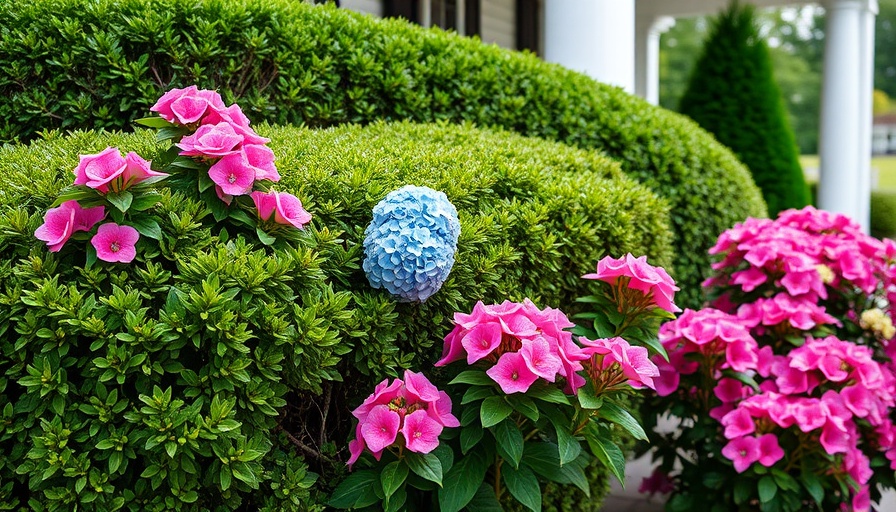
Transform Your Curb Appeal with Foundation Plants
The exterior of your home is the first impression visitors and passersby will have, making the careful selection of foundation plants crucial. They not only enhance aesthetic appeal but also contribute to the overall atmosphere of your property. A well-chosen foundation plant can complement architectural styles, elongate visual lines, and create a welcoming queue that draws people toward your home.
Importance of Foundation Plants
Foundation plants serve multiple functions: they provide contrast against hard surfaces, soften the landscape, and can aid in energy efficiency by reducing the need for heating and cooling. When strategically selected, these plants can play an integral role in the sustainability of your home’s environment—contributing to biodiversity and habitat support, while also integrating well into modern landscaping aesthetics. A well-planned selection can transform an empty quadrant into a lively hub of color and texture.
Top Choices for Foundation Plants
Here are five outstanding foundation plants that not only look good but are also easy to maintain:
- Boxwood (Buxus spp.) - Known for their evergreen foliage, Boxwoods can be pruned into various shapes and sizes, making them versatile. They provide year-round greenery and structure.
- Hydrangea (Hydrangea spp.) - With their striking flower heads, Hydrangeas add a splash of color to any landscape. Blooming from spring through fall, they bring vibrancy to your front yard.
- Daylily (Hemerocallis spp.) - These perennials are hardy and adaptable, producing bright blooms during the summer months. They thrive in a variety of conditions, making them an excellent choice for low-maintenance landscaping.
- Lavender (Lavandula spp.) - A fragrant herb that adds both color and scent to your garden, Lavender thrives in sunny locations and attracts pollinators, making your garden eco-friendly.
- Yucca (Yucca spp.) - It creates a perfect desert look with its striking sword-like leaves. Yucca is ideal for minimalistic landscapes and requires very little maintenance.
Embracing Sustainable Practices
Selecting foundation plants that require less water and maintenance assists in promoting sustainable practices in landscaping. Opting for native plants that thrive in your area's climate can reduce the need for artificial irrigation and chemical fertilizers. For instance, choosing drought-resistant plants not only conserves water but also fosters a natural ecosystem.
Design Trends to Consider
Contemporary landscaping trends emphasize minimalism and use of space. More homeowners now seek softer landscaping that merges indoor and outdoor spaces, making the selection of foundation plants more significant than ever. As more people value outdoor living areas, foundation plants should enhance these spaces while serving functional purposes.
Future Trends in Landscaping
The future of landscaping will likely continue to lean towards environmentally responsible choices. As climate change concerns increase, sustainable practices will expand, making the choice of hardy, fractal-based designs more appealing. Homeowners, particularly those in higher income brackets, are becoming more conscious of how their landscaping choices impact the environment, leading to an interest in plants that are not only beautiful but sustainable.
Final Thoughts on Your Foundation Plant Selection
When looking to elevate your home's exterior with foundation plants, consider plants that will thrive in your specific climate and provide year-round interest. Whether aiming for a lush, traditional look or a clean, modern aesthetic, the right combination of plants can create a striking visual while supporting ecological balance.
Don't hesitate to experiment with your selections to achieve a custom impact. Visit your local garden center to explore options and consider reaching out to a landscape designer to help realize your vision!
 Add Row
Add Row  Add
Add 




 Add Row
Add Row  Add
Add 

Write A Comment